Despite relatively tame border protests, Friday’s rocket fire suggests Iran-backed terror group’s Baha Abu al-Ata has his own agenda and is willing to set area ablaze to achieve it
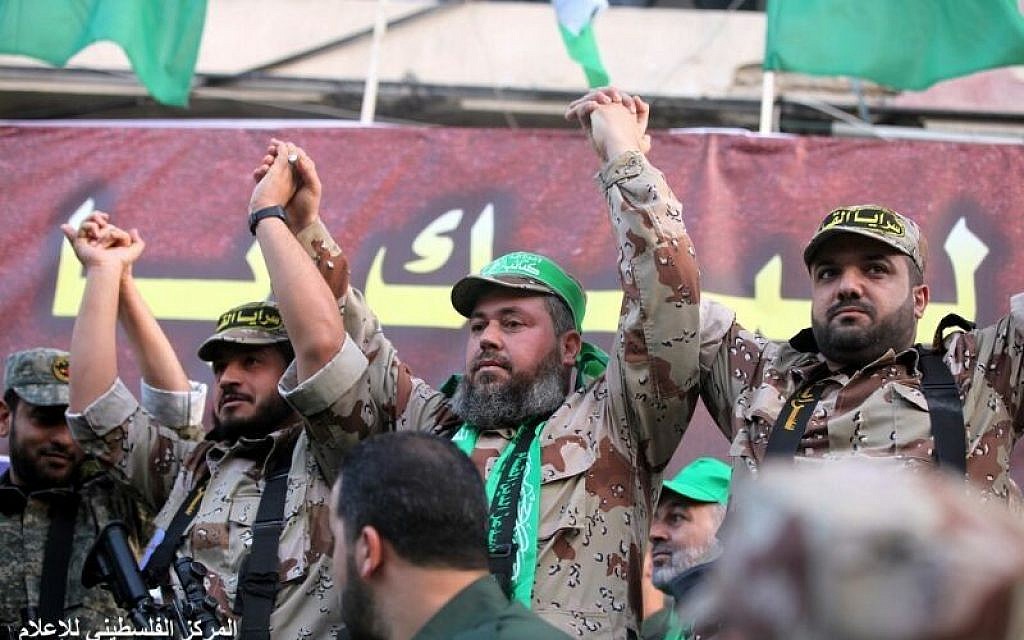
After a night of Israeli airstrikes in retaliation for rocket fire from the Gaza Strip, it was unclear whether a particularly short round of fighting between Israel and Palestinian terror groups in the coastal enclave was over or just beginning.
Ten rockets were fired into Israel Friday evening, one of which struck a home in the southern city of Sderot. A rocket was also launched from the Palestinian territory on Thursday, landing in an open field.
In response to the latest rocket fire, the Israel Defense Forces struck numerous Hamas targets in the Strip. The Hamas-run health ministry in Gaza later reported the death of 27-year-old Ahmed al-Sheri of Khan Younis in the strikes.
It can be assumed that the Gaza-ruling Hamas is not looking for an escalation of violence due to numerous developments in the Strip, though it appears fellow terror group Islamic Jihad is doing everything possible to set the area ablaze, with Hamas standing by and allowing it to do so for fear of public opinion.
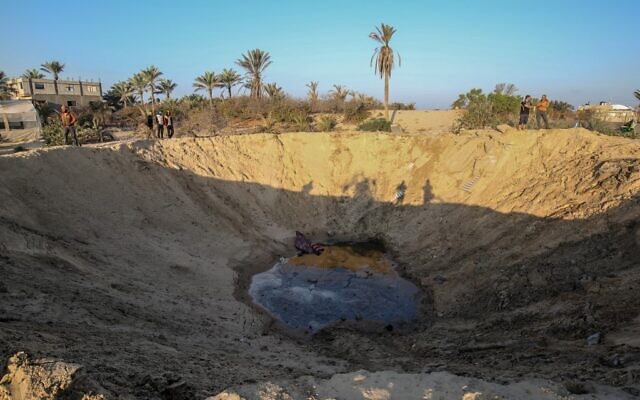
Some in Israel have been quick to attribute the unruliness of Islamic Jihad in recent months to Iran’s influence over the organization. Such influence is indeed long-standing and continues to exist — but the situation is more complicated, involving a number of personal and political motives, and not necessarily alleged “commands” from Tehran.
The growing trend of escalation by Islamic Jihad is being led by the figure thought to be the head of its military wing in northern Gaza, Baha Abu al-Ata.
Time after time, the Israeli security establishment takes pains to publish or leak al-Ata’s name to various media outlets as the person behind the rocket fire and efforts to launch other attacks, in the hopes that Hamas will rein him in.
Hamas, however, is not doing this.
Al-Ata is a serious troublemaker in Gaza that no one wants to confront, including Hamas leaders Ismail Haniyeh and Yahya Sinwar, who fear him and the possibility of being accused of collaboration if they act against him.
Even Ziad al-Nakhala, Islamic Jihad’s leader, hasn’t succeeded in dealing with al-Ata, who is acting from a clear personal and organizational agenda.
Al-Ata holds particularly extreme opinions against Israel and the current ceasefire between it and Gaza-based terror groups, including the agreement to allow money from Qatar into the enclave. Friday’s rocket fire came shortly after Mohammed al-Emadi, Qatar’s special envoy for Gaza, left the Strip after again coming to distribute funds there.
Al-Ata, whose picture has previously been released by the IDF spokesperson’s office, wants an even more extreme and uncompromising stance toward Israel and does not necessarily adhere to Iranian orders, but rather his own whim.
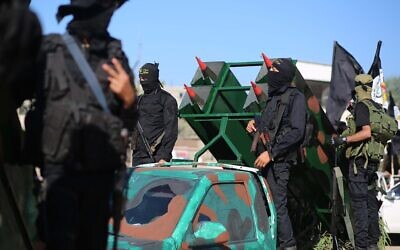
At the organizational level, he is not considered an enthusiastic supporter of Nahala and therefore has frequently acted against the Islamic Jihad leader’s orders to prove who is in charge.
Furthermore, Al-Ata understands that in order to boost Islamic Jihad’s standing in Gaza, he needs to differentiate it from Hamas and the Gaza-ruling terror group’s agenda. As Hamas leads a policy of seeking quiet vis-a-vis Israel and improvement in Gaza’s economic situation, al-Ata is trying to brand himself and his organization as the true “resistance” in the Strip.
With his actions, al-Ata is effectively spitting in many peoples’ faces: The heads of Hamas who are looking to restore calm to Gaza, as well as the Egyptians, who have tried again and again to advance a ceasefire and received various promises of calm from Islamic Jihad and even al-Ata himself.
In recent years, Egypt has arrested dozens of Islamic Jihad operatives who have traveled out of Gaza to training camps in Lebanon, Iran and other places. Earlier this month, Egypt released almost all of them from prison as a gesture to Islamic Jihad and as an attempt to calm the mood among al-Ata’s men.
It appears the gesture did not make much of an impression on Islamic Jihad, which Friday night’s rocket fire attested to; and Islamic Jihad’s leadership finds itself helpless in light of al-Ata’s actions.
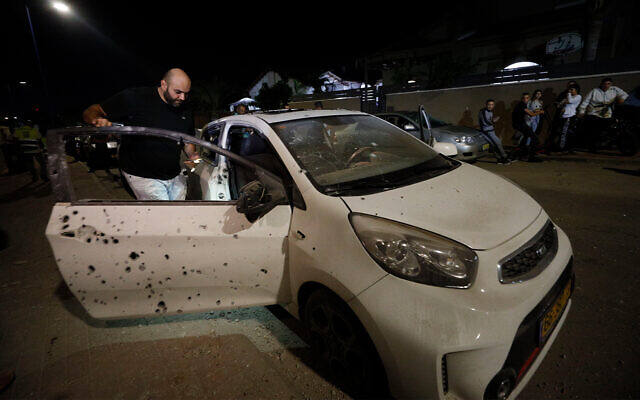
The latest rocket fire comes at a particularly bad time for Hamas. Haniyeh, Sinwar and other Hamas leaders were apparently jealous of Israel and are now preparing for possible elections in Gaza and the West Bank for the Palestinian legislature, something which until recently seemed impossible due to the overt friction between Hamas and the Ramallah-based Palestinian Authority.
However, public doubt in both Palestinian Authority President Mahmoud Abbas and the Qatari mediator who supplies Hamas with cash, now leads Abbas’s Fatah party and its rival Hamas toward parliamentary elections, with a separate presidential campaign to come at a later time.
Additionally, the economic reality in Gaza has stabilized a little. There has not been a significant improvement, but at least cosmetically, the Qatari grants are flowing to the Strip every month; the power supply is getting better; the Egyptians are letting many goods in through the Rafah crossing at cheap prices; and all in all it appears Hamas leaders are content with the calm that has taken hold over the last month and half — at least until Friday.
It is is difficult to come up with an explanation for this relatively surprising escalation, as the demonstrations Friday along the border fence with Israel were not particularly irregular.
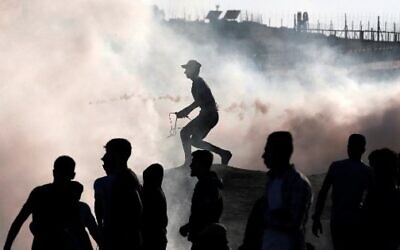
According to organizers, the border protests were held under the banner of the anniversary of the Balfour Declaration that extended British support for a Jewish homeland in the Land of Israel, which the Palestinians continue to mark as if nothing has changed.
Senior Hamas leader Khalil al-Hayya, who made an appearance Friday at a protest tent near the border, gave another speech filled with pathos and cliches that the days of the Israeli occupation are numbered and that the Palestinians will continue their struggle against it.
Only a few thousand Palestinians showed up for the protests, continuing the trend of declining participation in the “March of Return” demonstrations in recent weeks. The Gaza public appears to be growing tired of this ritual, with even Hamas pondering its benefits.
“Only” a few dozens injuries were reported on the Palestinian side, with no fatalities, so Friday’s demonstrations should not have been the cause of violence from Islamic Jihad or Hamas.
But it appears al-Ata has his own logic.
As reported by The Times of Israel
